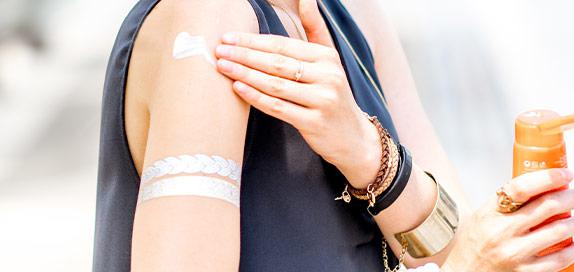
Complete Guide to Sun Care and Tanning
By Carly Cochrane, Beauty Editor
With our sun care & tanning guide, you can find out everything you need to know before buying or using the product. If you're ready to buy or want to see our selection, visit our sun care and tanning page.
Your Guide To Sun Care & Tanning
Sun Protection
By bringing together products from high-quality brands such as REN, Coola and Ultrasun, we offer a wide range of sun protection for everyone in the family. With sun creams, lotions, oils and sprays you can easily take care of your face, body and hair all year round. Discover a range of SPFs today and find your new favourite must-have sun care product.
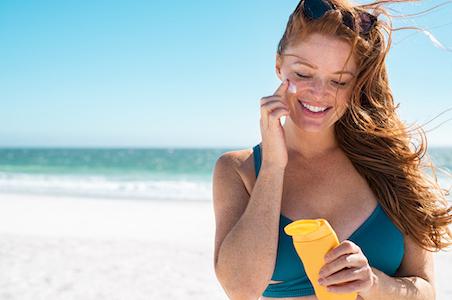
Why is sun protection so important?
Sun protection is a crucial step for everyone in the family. Although sun exposure helps our bodies produce vitamin D, you still need to protect your skin from harmful UVA and UVB rays. UV rays can cause skin damage, premature skin ageing, eye damage and over exposure can even lead to skin cancer.
That's why it so important that you protect your precious skin, using sun creams and lotions with broad spectrum SPF every day – especially if you're spending prolonged periods outside. You can find physical sun cream ingredients which block the rays and chemical sun cream ingredients which absorb the rays before they cause any damage. Both types of sun protection are an important step in your body care routine.
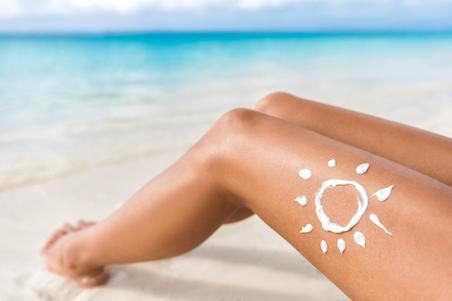
Which sun cream gives you the best tan?
At Cosmetify we have a range of sun creams that offer SPF protection, while also boosting your tan. When searching for the best one, make sure it has at least SPF 15 or higher as this protects your skin from damage. Use our search filters to find the best tanning sun creams, with leading brands such as Skinny Tan, Green People and Bondi Sands.
Whether it's a tan accelerator, tan enhancer or sun cream enriched with self-tanning ingredients, you can protect your skin and achieve a sun-kissed finish all in one go. For an all year-round golden glow, take a look at our huge collection of nourishing fake tans.
How long does sun cream last?
Sun cream has a shelf life anything from one to three years. However, we recommend checking individual products for expiration dates. So, when the sun decides to make an appearance don't rely on that sun cream you've had for years in the back of the bathroom cabinet, as this won't be effective. Instead make sure you stock up on your favourite sun protection for your body, face, hair and lips.
And remember, you should be wearing SPF daily. But when you're in the sun make sure to reapply your sun protection over your entire body every two hours. You also need to reapply sun lotions after swimming or showering to make sure you're still protected from any harmful UVA and UVB rays.
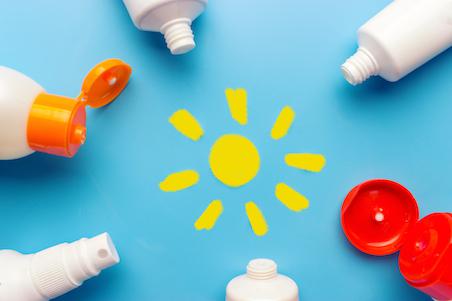
Which sun protection cream is best?
It all depends on your requirements or skin type. Protect your body from head to toe, with sun creams and lotions made specifically for every inch of skin. We have a range of leading brands and exciting new companies for you to choose from. Discover classic well-known sun care brands like Piz Buin, Lancaster and Ultrasun and modern sun care must-haves like Coola, Mimitika and Nuxe.
Whether it's hair sun protection mists, child-friendly sensitive sun creams or SPF enriched lip balms, there's something for everyone. Simply browse our categories and use our filter system to refine your search by skin concern, format, ingredient preference and even price – perfect for finding budget-friendly sun protection in a few simple clicks.
Fake Tan
Fake tan has become a go-to cosmetic for the millions who value a little extra colour and vitality. By choosing the tanning product that’s best for you, you can lock in a shade and radiance that truly looks natural. Discover everything from self-tanning mousse, gel, oil and lotion and give your entire body a bronzing. Or, rock a light, sun-kissed complexion, thanks to our selection of face tanners.
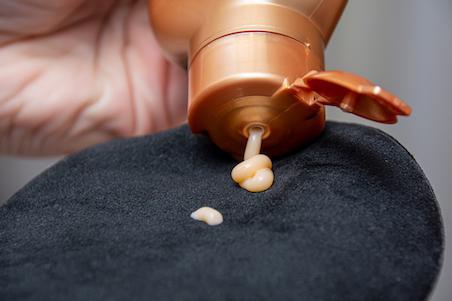
What is the best self-tan?
The fake tan market has significantly improved with formulas offering both natural and professional results. The best and most popular self-tans are often those that have a foam or mousse formula as they are easy to apply, quick drying and keep skin hydrated. All skin types, from dry to oily, can benefit from a mousse fake tanner.
Other great formulas include lotions and oils, whilst water-based fake tans are one of the newer products to hit the shelves.
If you're new to tanning, you might want to start with some of the best self-tans to ensure flawless results. Skinny Tan, St Tropez and Bondi Sands are giants in the sector and offer a variety of cult-favourite formulas. You can also discover more of the best self-tans from Instagram-popular brands such as Isle of Paradise and Bali Body.
How does fake tan work?
Every fake tan formula works by utilising an ingredient called dihydroxyacetone, which is also labelled as DHA. Derived either chemically or from natural sources such as beets and sugar cane, it is a carbohydrate that changes the colour of your skin without sun exposure. How, we hear you ask? Well, it reacts with the oxygen in the air and the amino acids that are on the top layer of skin, which in turn allows skin to gradually appear darker. The process starts within two to four hours after application and can continue for up to 72 hours.
Dihydroxyacetone is also the substance often responsible for the infamous fake tan 'biscuit' smell, as it boasts a distinctive yeast scent.

Is fake tan bad for skin?
Fake tan is a much safer alternative to baking your skin in the sun and doesn't cause any harmful side effects. In the past, there were some concerns that the DHA ingredient used in fake tans could be harmful but it was soon confirmed that self-tan formulas generally contain a 3-5% DHA level, which is considered non-toxic. Dermatologists and experts agree that when used correctly (i.e. topically), there is no indication that self-tanning formulas are bad for your skin. They can even be used by pregnant women!
It is important to remember that fake tan does not offer sun protection and should not be used instead of sun cream. Although many formulas are moisturising and claim to include SPF, you should still apply a broad-spectrum sun cream.
Should I fake tan my face?
You can apply fake tan to your face if you want to achieve a natural, undetectable glow. You can do this by adding a pump or two of your self-tan into your everyday moisturiser, or by sweeping the remnants of the tanning mitt over your face. However, this method may lead to irritation if you have sensitive skin or breakouts if your complexion is typically oily, so be sure to look out for tans that say they are oil and alcohol-free.
Alternatively, there are a wide variety of face tanning products that you can choose from, all of which have been specially formulated for skin. Take your pick from tanning drops, serums, creams and waters and reap both the skin care and tanning benefits they have to offer. Some of the best fake tans for your face come from the likes of James Read Tan, Tan-Luxe and Isle of Paradise.
What is the best way to prepare for fake tan application?
A flawless fake tan relies on the preparation taken beforehand. The best way to prepare your skin for fake tan application is to firstly remove hair and exfoliate with a body scrub. This will create a silky-smooth canvas for your new colour and also buff away any old, stubborn tan.
Next, you should ensure that skin in completely clean. That means no perfume or deodorants as they can react with the formula and turn your tan green.
To guarantee an even, patch-free tan, apply a light moisturiser or tan primer to dry areas of your body, such as the ankles, knees, elbows, wrists and in between fingers and toes. This will act as a barrier and stop the tan from clinging or turning orange.
Last, but certainly not least, always apply your tan with a tanning mitt, as not only does it protect the palms of your hands but it also gives an even, seamless coverage.
Tan Enhancers
While most tanning products either protect your skin or tint it, tan enhancers are perfect for giving your body the little boost it requires to sustain durable, healthy and vital colour. Check out a range that takes in both Piz Buin and Thalgo, amongst many others.
How can you enhance your tan?
Enhancing your tan is something we would all like to be able to do, and luckily, tan enhancers make it easier than ever. If you're someone who tans easily, then a tan enhancer is a cheap and convenient way to maintain you golden glow throughout the year. The nature of tan enhancers amplifies your skin's production of melanin, which helps the skin produce a sun-kissed complexion.
You can opt for fake tan or hours of sunbathing, however, neither option is as safe or effective as tan enhancers. They're preferable to fake tan due to their natural-looking finish, and they're safer than sunbathing because they require less time underneath the rays of the sun. They're a seamless way to get your dream colour, and they require minimal effort - what more could you ask for?
A bottle of efficient tan enhancer should last you for a few weeks, maybe even in a couple of months, so you don't have to constantly refresh your tanning selection to keep your colour. Apply the lotion every day, and you soon start to notice a welcome difference in the colour of your tan.
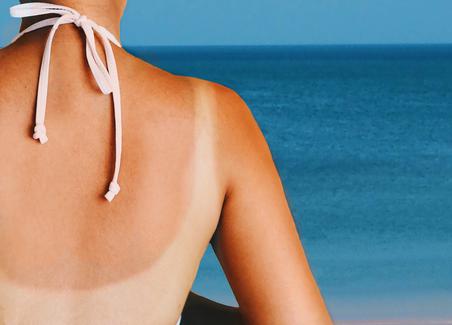
What is the best tan enhancer?
Most of us look better with a tan, and as we've come to that realisation, many brands have tailored their products to help us achieve that sun-kissed glow. Tan enhancers are one of the best ways to achieve a bronzed complexion: they're easy to apply, relatively inexpensive and they deliver a natural tan as opposed to a synthetic colour. Laced with natural, healthy and active ingredients, the formulas deliver a gorgeous colour as well as soft, smooth and clear skin - the perfect combination.
The rich variety of lotions allows you to find the tone that's right for you; give a subtle glow to pale skin or get a deep, warm brown reminiscent of Latin America. The lotions are perfect to apply before you head off on holiday, or if you want an effortless way to maintain a tan throughout the year.
Brands like St Moriz, Lancaster and Piz Buin cater to all tones, budgets and lifestyles. You can find an efficient, affordable formula for less than £10, or a deluxe lotion for around £35-40.
How to use a tan enhancer?
When you can have the opportunity to show off a golden tan all year round, why not take it? Tan enhancers are the best way to achieve and maintain a natural tan, and they're extremely simple to use. Due to their incredible softening and hydrating qualities, most tan enhancers can replace your moisturiser, especially during the summer months.
If you're after a lotion that provides a sun-kissed complexion and silky-smooth skin, scour the ingredients list for coconut oil, aloe vera and Vitamin A - this is the trifecta that guarantees a healthy, natural-looking tan. To apply the lotion, simply use it like a moisturiser; squeeze a healthy amount onto the palm of your hands, then lather it all over your body. Make sure you cover all areas that you want to tan, and apply the lotion evenly to avoid patches.
Let the skin naturally absorb the lotion, and then apply more if you feel like there's some areas that you missed. Repeat this process daily for 2-4 weeks and your skin should show a tangible difference.
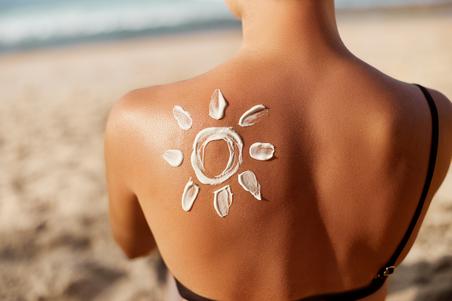
How long does a tan enhancer take?
Getting that golden complexion is one of the best parts about a summer holiday in the sun, but some of us like to get that deep, dark tan before we jet off on the plane. Tan enhancers are the best way to accelerate the tanning process, but it can be tricky to get the timing right: you don't want to get the ideal, olive colour too early, but you also don't want to still have a pale complexion by the time you land.
To make sure your tan is at its peak colour when you arrive, its best to apply a tan enhancer 2-4 weeks before you set off. This gives your skin plenty of time to build up its melanin production, so your complexion is looking and feeling healthy throughout your holiday. Whether you should wait four weeks or two weeks prior depends on how quickly you tan; if you have pale skin that takes a while to get some colour then it's best to opt for a month before, whereas if you tan quickly then two weeks should suffice. If you're somewhere in the middle, we suggest three weeks just to be sure.
Alongside its obvious benefits, a tan enhancer is filled with hydrating, skin-loving ingredients which give your skin plenty of moisture. They can often replace your moisturiser during the summer months, saving you a bit of extra cash.
After Sun
More than anything else, after sun is a license not to worry. Industry mainstays like Dr Hauschka and Collistar have developed these sun care formulas so that you can truly enjoy beautiful weather. Bask away, safe in the knowledge that the right formula can bring health and comfort back to your skin.
What is the difference between aftersun and moisturiser?
Aftersun and moisturiser are fairly similar, though there are a few clear differences. Primarily, aftersun is designed to soothe burnt, irritated or sore skin, so its packed with active nutrients that calm and restore your skin's long-term health. Most aftersun formulas contain aloe vera which is renowned for its restorative purposes and soothes irritated skin quickly and efficiently.
You could use aftersun as an effective replacement to moisturiser; it has the same smoothing, softening and hydrating qualities as moisturiser and they often contain similar ingredients. However, a moisturiser wouldn't be as adept at acting as an aftersun because it oftentimes lacks the key restorative ingredients.
If you're going on holiday, we recommend opting for a potent aftersun to keep your skin healthy. However, for the home birds, we suggest investing in an enriching moisturiser for your skin care routine.
What does aftersun do?
Aftersun is a must-have in your travel bag when you're jetting off to a sunny destination. After a long day basking in the scorching rays of the sun, aftersun keeps your skin soothed, protected and hydrated. As much as we all love getting a gorgeous tanned complexion, the harmful UV rays of the sun damage your skin, cause dryness and can lead to peeling. Aftersun helps reduce any irritation, sunburn or patchy skin, helping you to maintain a smooth and clear complexion.
Not applying aftersun after lengthy exposure to the sun can cause a chain reaction of damage to the long-term health of your skin and result in premature ageing. Aftersun is rich in minerals, vitamins and antioxidants, a potent blend that replenishes, restores and softens your skin.
Many aftersun formulas are full of skin-loving botanicals and actives that restore the skin's moisture and product a healthy glow. Even if you've not been spending much time in the sun, it's still worth applying aftersun to keep a smooth complexion.
Learn the specifics of some of our favourite after sun products on our blog.
How long does aftersun take to soothe burnt skin?
Sunburn rears its ugly head after about three hours of exposure to the sun, and can often worsen over the course of the next 24 hours. To reduce the damage of harmful UV rays, you need to apply aftersun immediately to maintain your skin's health and reduce any inflammation.
After application, the sunburn won't appear as extreme or severe, especially if you apply it before any sunburn as even appeared. Should you still suffer from sunburn, aftersun helps calm any sore spots and usually eradicates any sunburn in a few days. To hydrate, soften and brighten the skin, look for aftersun with healthy does of aloe vera to maintain a smooth complexion.
Even if you're not subject to sunburn, you notice a tangible difference in the look and feel of your skin after a few days of applying aftersun. The formulas are designed to soothe and nourish your skin, producing a healthy glow.
Can you use sun cream as aftersun?
To put it simply, no. Sun cream and aftersun have completely different purposes: sun cream is made to protect your skin from the sun, whilst aftersun was designed to soothe and heal your skin after long exposure to the sun. Think of sun cream as a barrier for the skin, whereas aftersun acts more like a sun bandage. They are best used in conjunction with one another, as opposed to one replacing the other.
The two are separate entities and often contain entirely different ingredients. Sun cream contains high levels of oils that often trap the heat and irritation caused from sunburn, prolonging the pain, damage and sensitivity. So applying sun cream to burnt skin often worsens the pain, causes more damage to the skin and increases the time it takes for the skin to repair itself.
Much like how you shouldn't use sun cream as a replacement for aftersun, the reverse is also true. Aftersun has no protective qualities, so your skin is still vulnerable to harmful UV rays. It keeps your skin's moisture and maintains a higher level of hydration, but provides no preventive measures.





